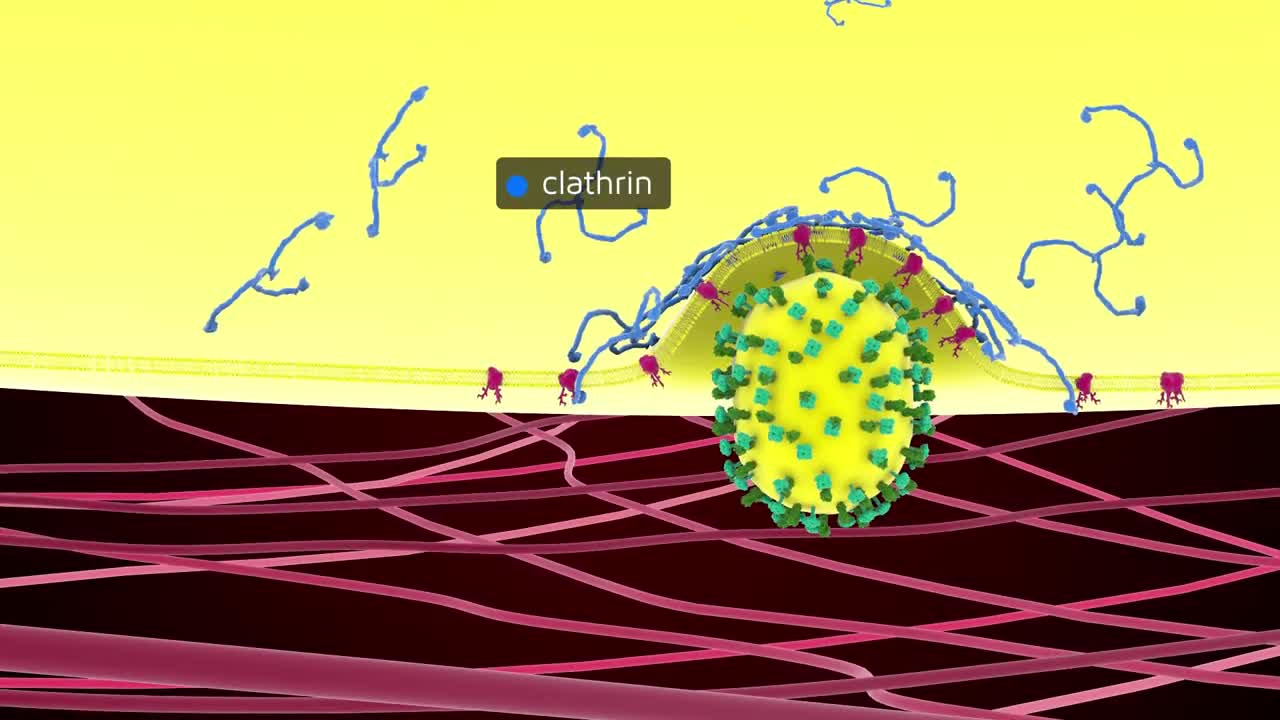Premium Only Content

Influenza Virus - Viral entry and fusion inhibitor
Influenza epidemics affect millions of people every winter. The human influenza virus is an enveloped, ellipsoid-shaped virus of the Orthomyxoviridae family. This virus attacks respiratory system cells.
Viruses are simple biological compounds that need to infect cells to replicate. Influenza virus first interacts via its haemagglutinins with sialic acids anchored to the surface of the respiratory epithelial cells.
This interaction initiates virus entry into the targeted cell by endocytosis. A vesicle coated with clathrin is formed and released into the cytoplasm.
Below pH 6, this acidification results in important conformational changes in the haemagglutinin structure.
A fusion pore is created and the viral genome is released into the cell cytoplasm near the nucleus.
New viral particles are synthesized with the help of the cellular machinery. They bud off of the cell and infect new cells.
-
 8:18
8:18
DropItLikeItsScott
15 hours ago $0.34 earnedThe SAR9 SOCOM Optics Ready Pistol is a GAME CHANGER!
6.41K2 -
 35:31
35:31
The Lou Holtz Show
13 hours agoThe Lou Holtz Show S2 Ep 2 | Chad Hennings on Super Bowls, Fighter Jets, and Leadership #podcast
6K1 -
 36:04
36:04
Degenerate Plays
15 hours ago $2.13 earnedWhat Movies Would You Bring To A Deserted Island? - Stellar Blade : Part 38
27.1K -
 29:30
29:30
PMG
19 hours ago $0.65 earnedHannah Faulkner and Corinne Cliford | WILDFIRES, FEMA, & GAVIN NEWSOM
15.9K1 -
 2:52:22
2:52:22
Alex Zedra
10 hours agoLIVE! New Game | Infestation Origins
37.5K2 -
 1:01:25
1:01:25
Rob Braxman Tech
17 hours agoBusy Week in the AI World! What this Means for You!
76.9K22 -
 1:02:53
1:02:53
The Charlie Kirk Show
10 hours agoTHOUGHTCRIME Ep. 71 — Airline DEI Again! Fed Redditors? Gayest Movie Ever?
122K86 -
 1:57:34
1:57:34
Kim Iversen
14 hours agoRFK Jr., Tulsi, Kash Patel SHRED Senate Clowns—Democrats Humiliated!
142K286 -
 3:06:08
3:06:08
Laura Loomer
11 hours agoEP 97: Trump's Nominees Transform America
72.4K53 -
 1:03:00
1:03:00
Man in America
19 hours agoThe Helicopter Crash DOESN'T MAKE SENSE... What REALLY Happened???
68.2K123